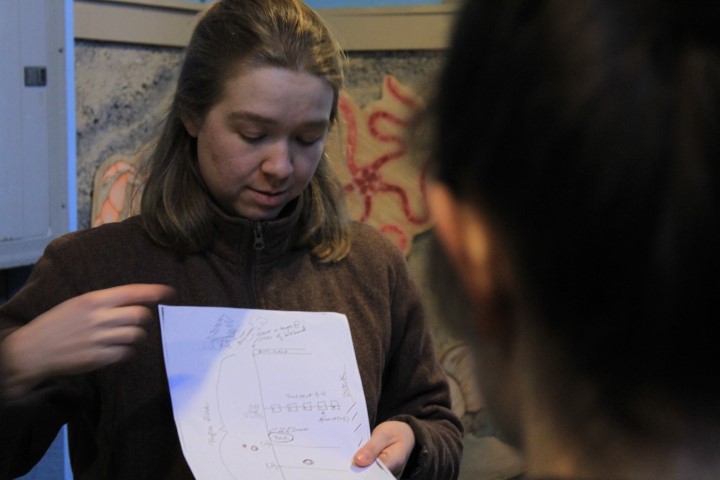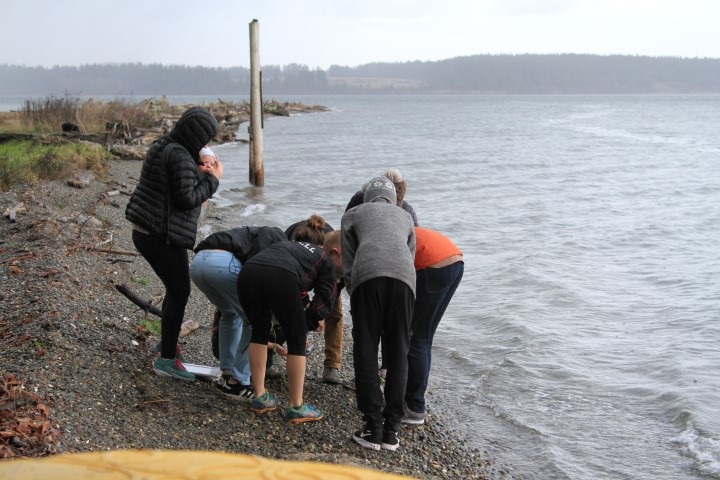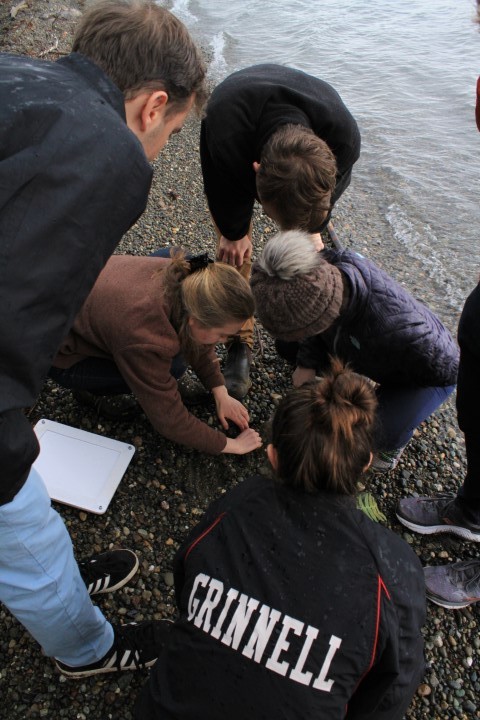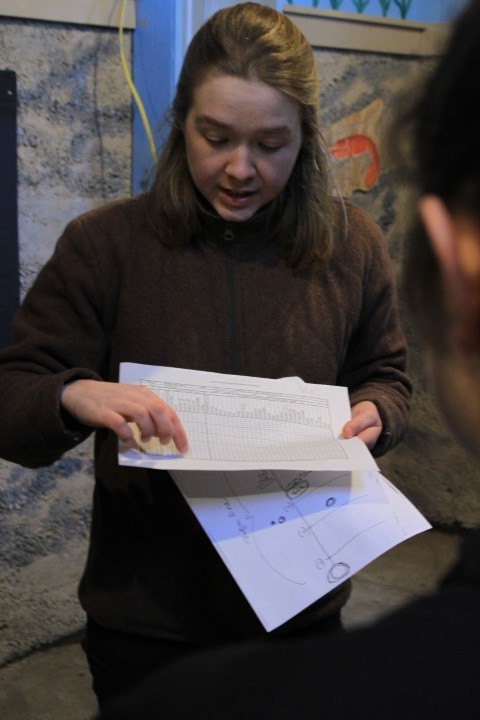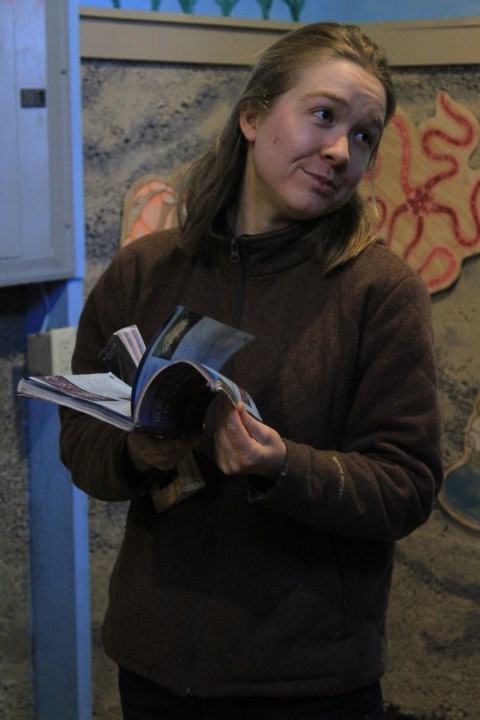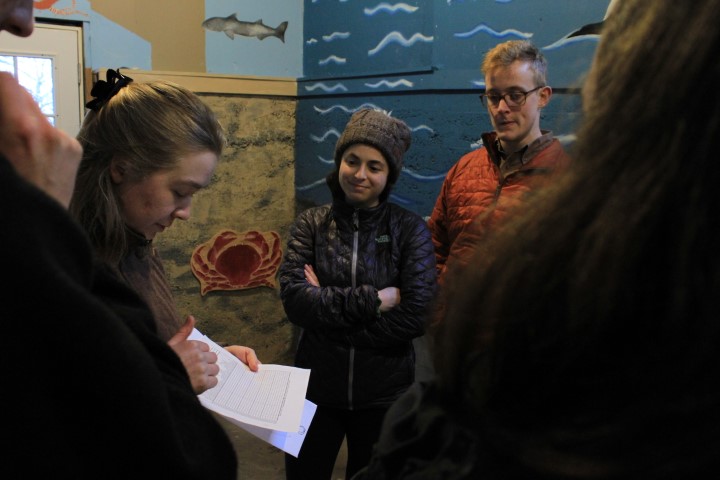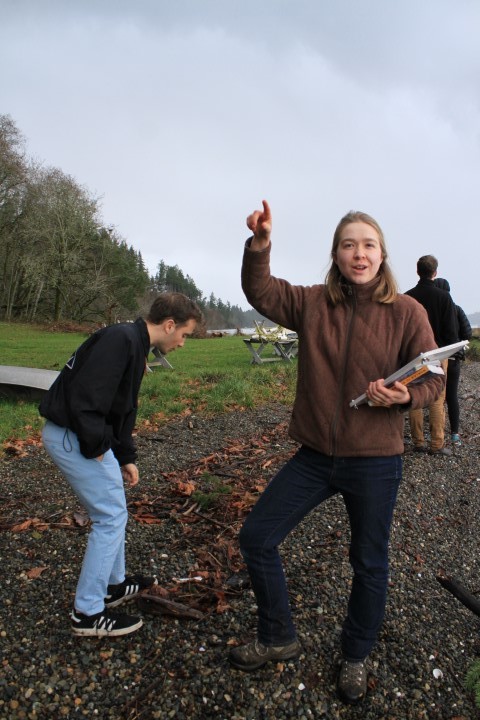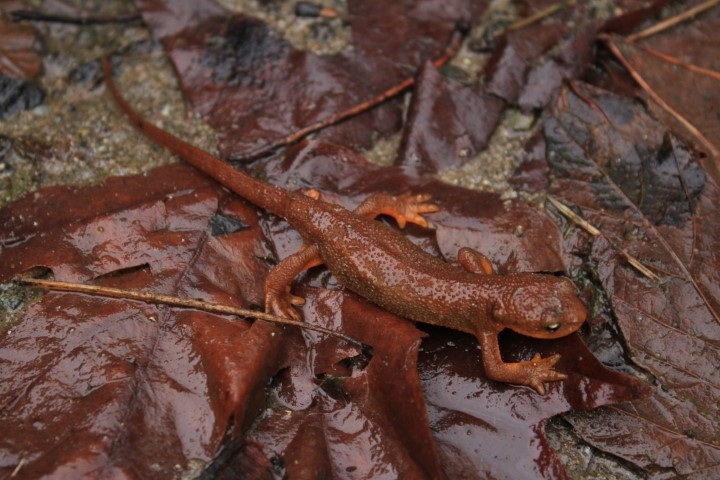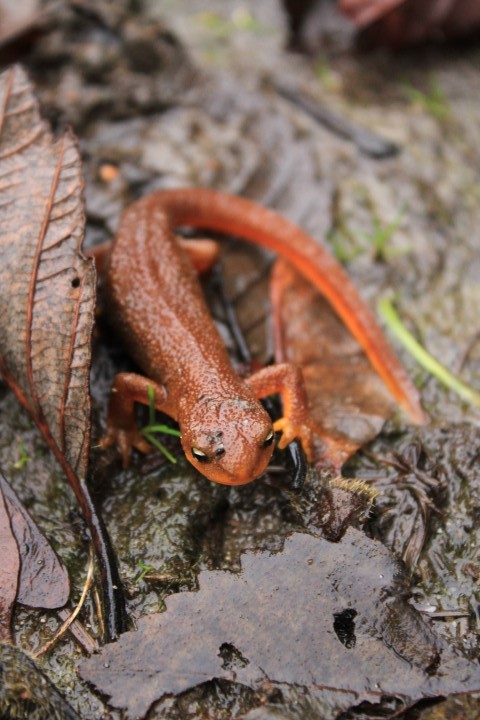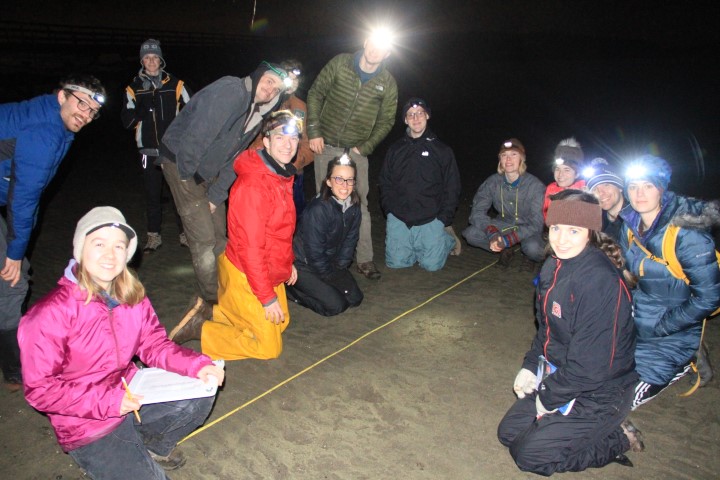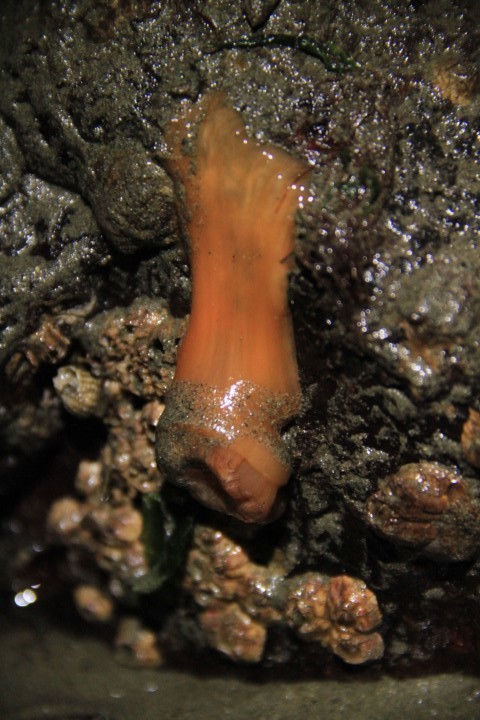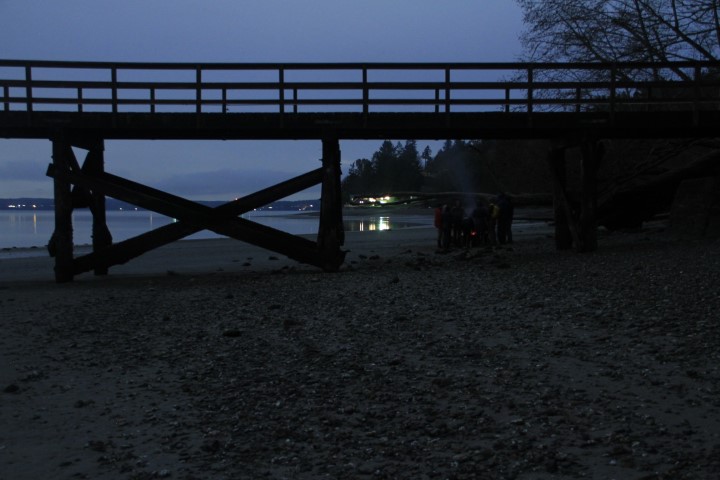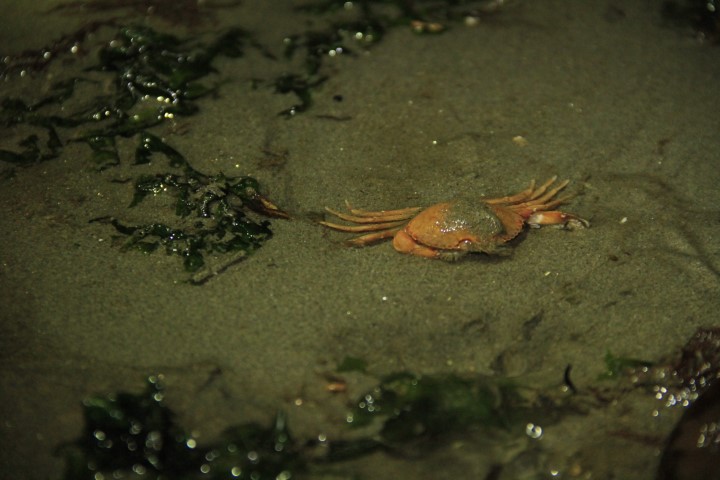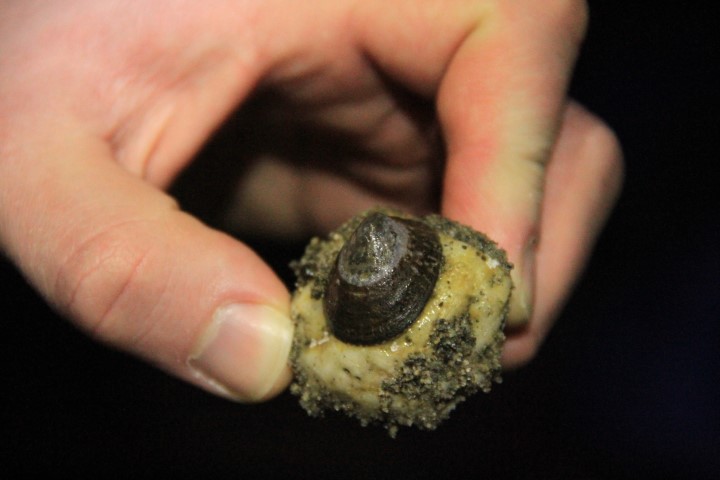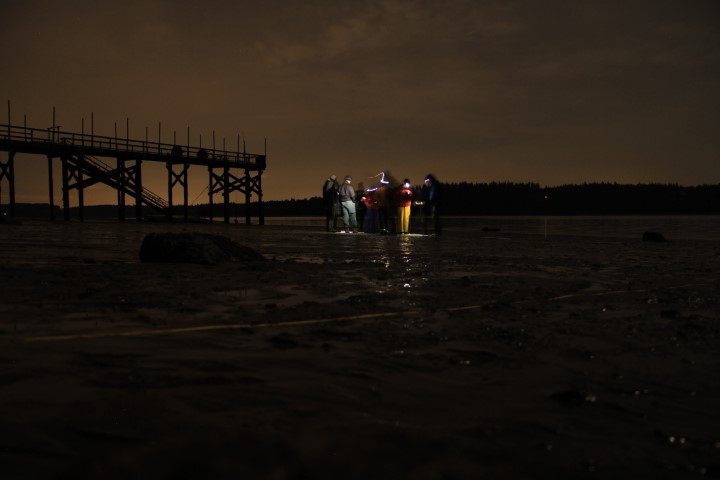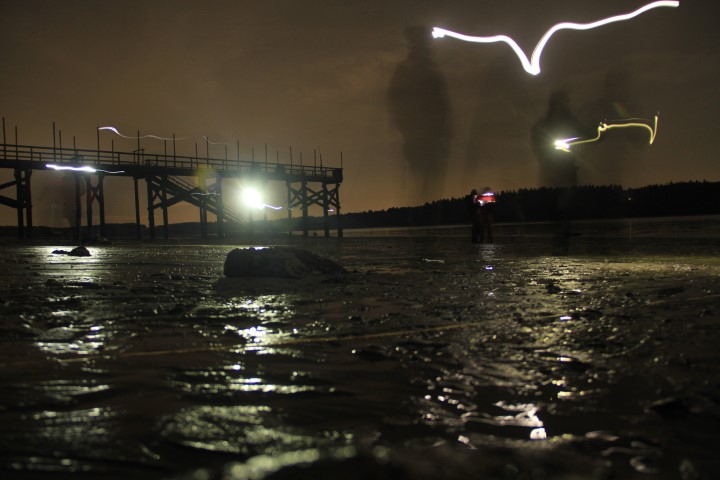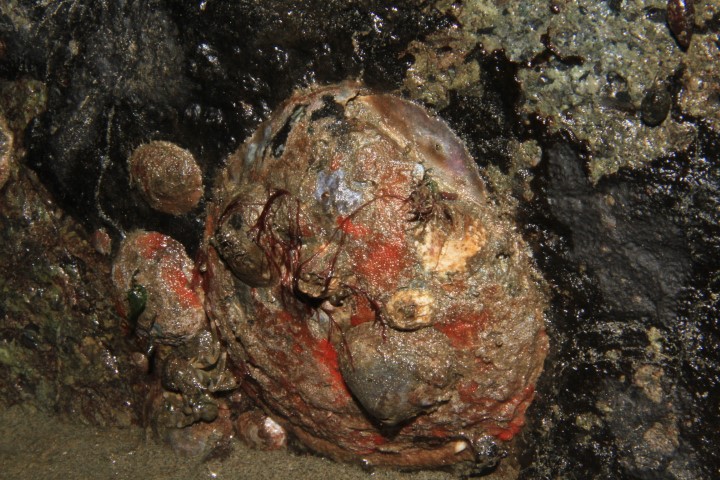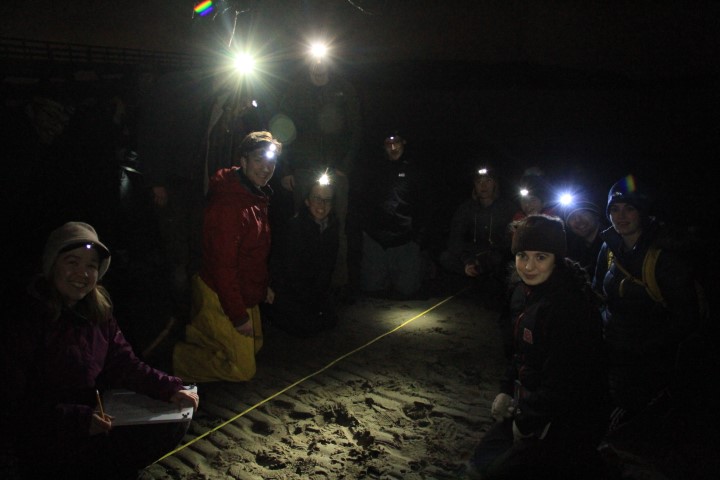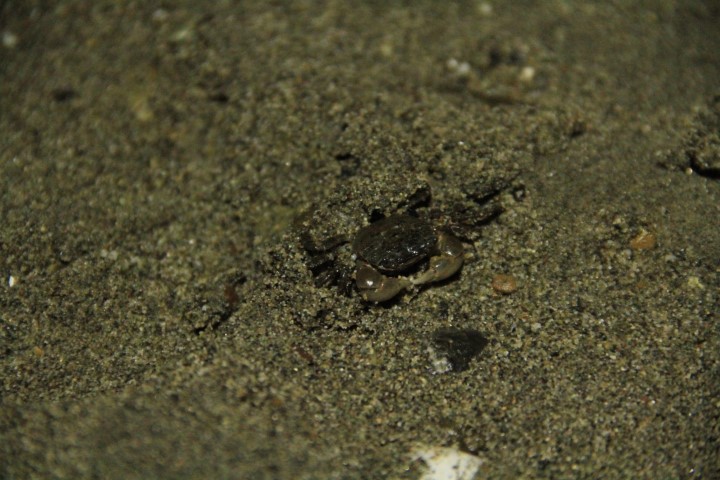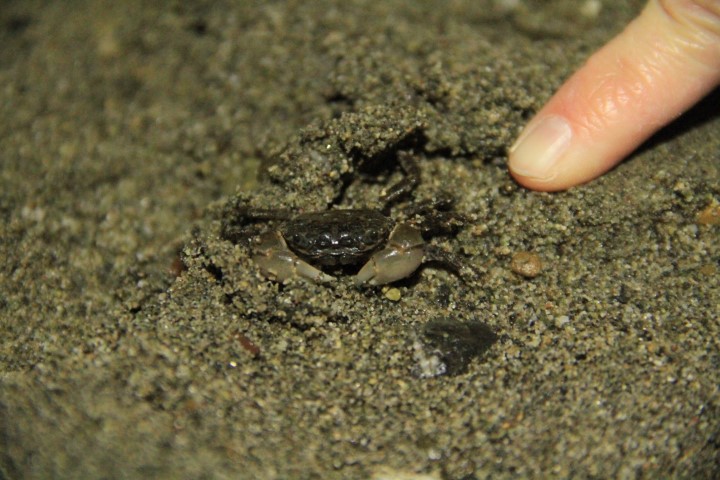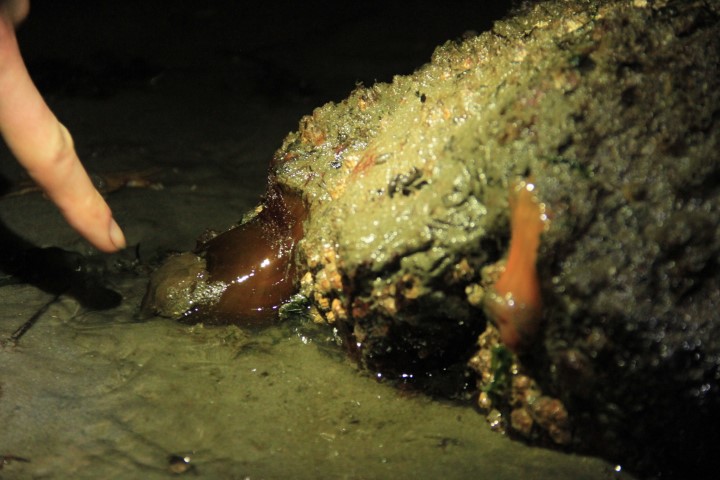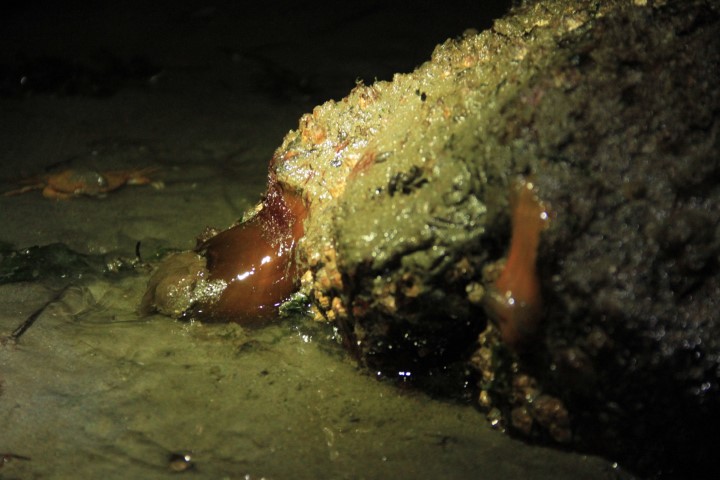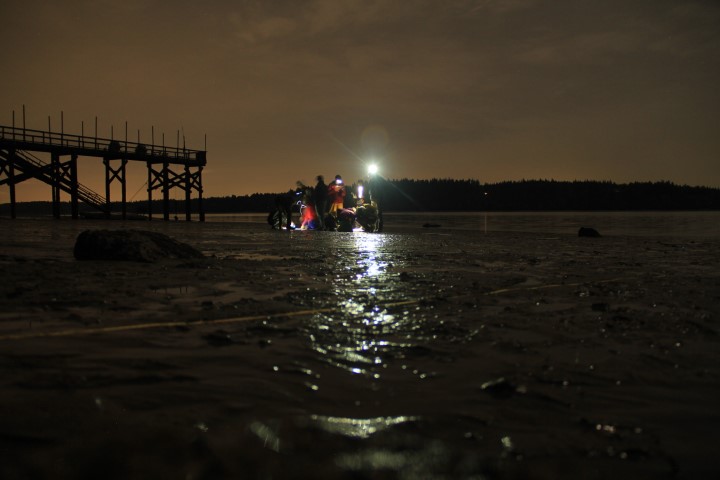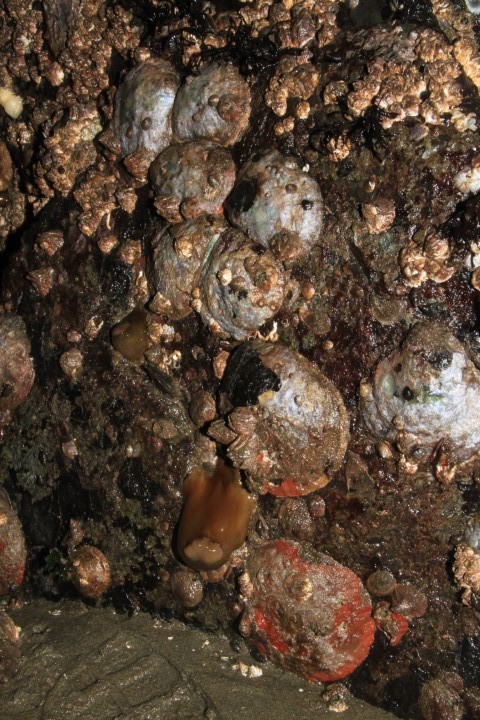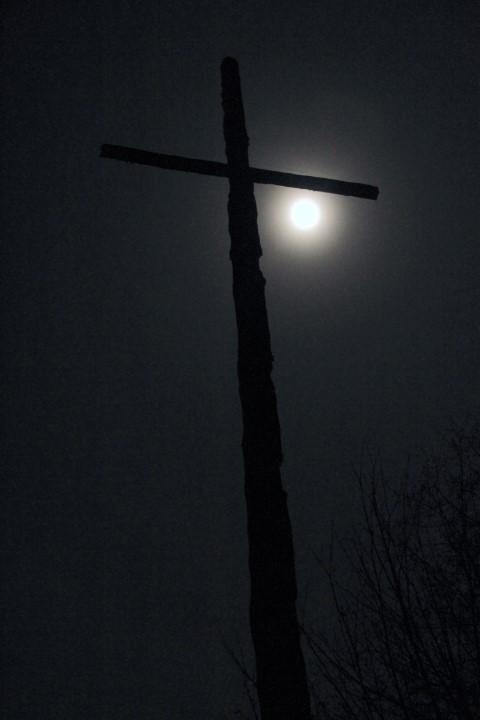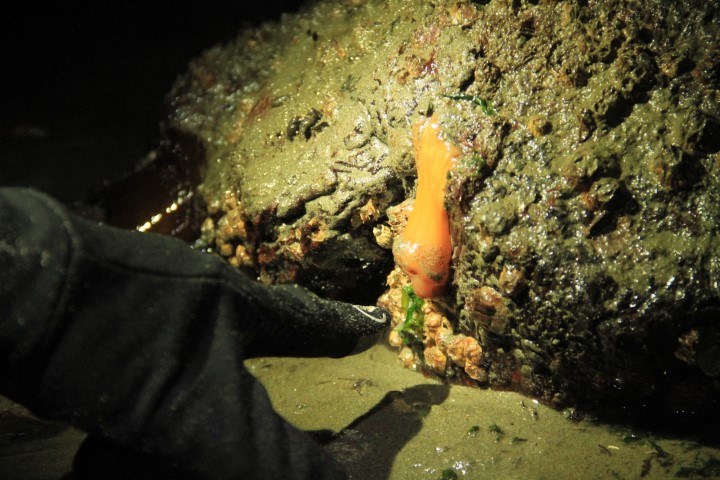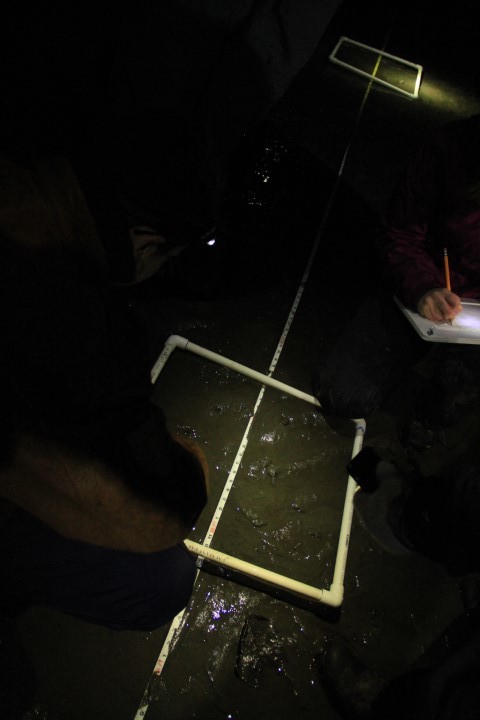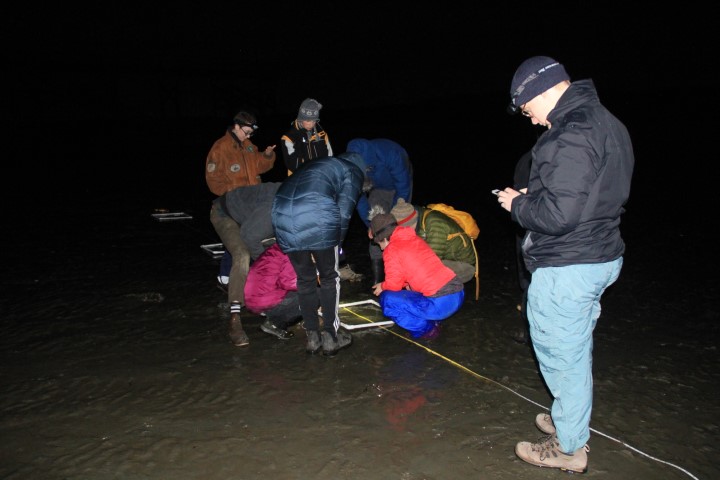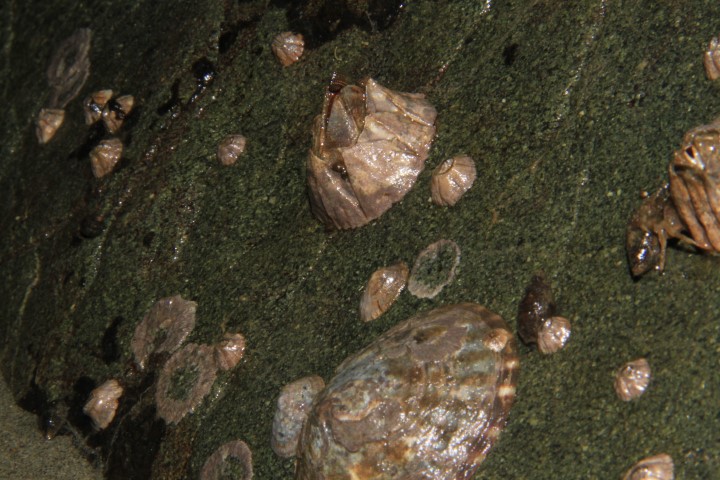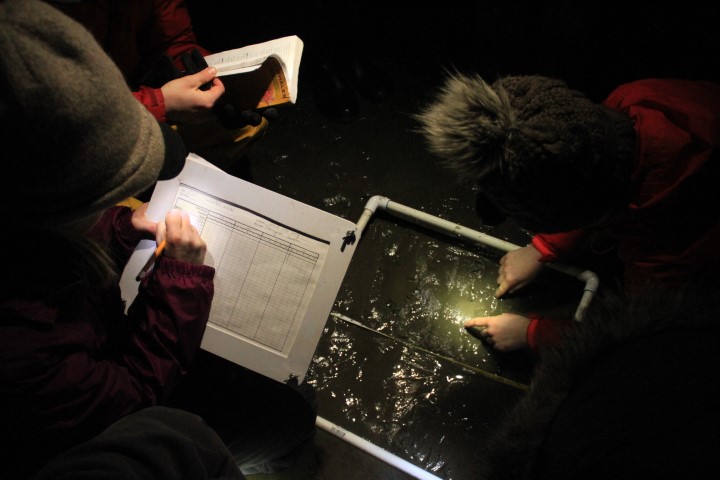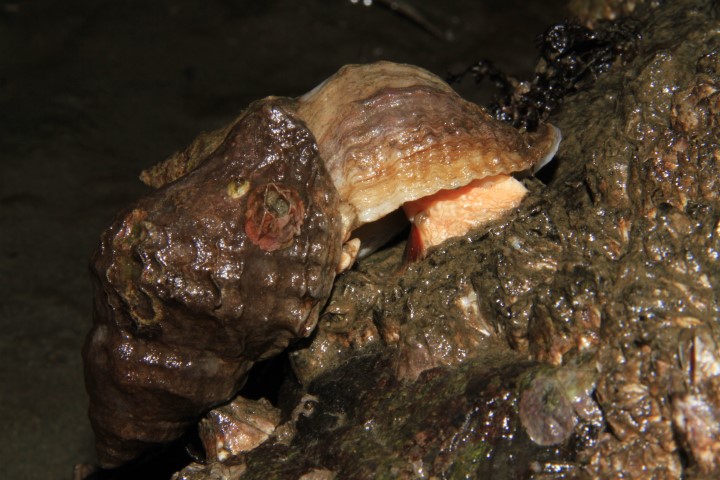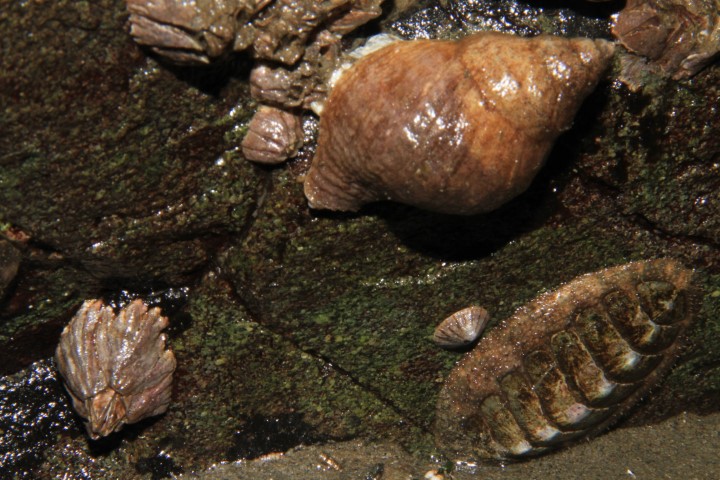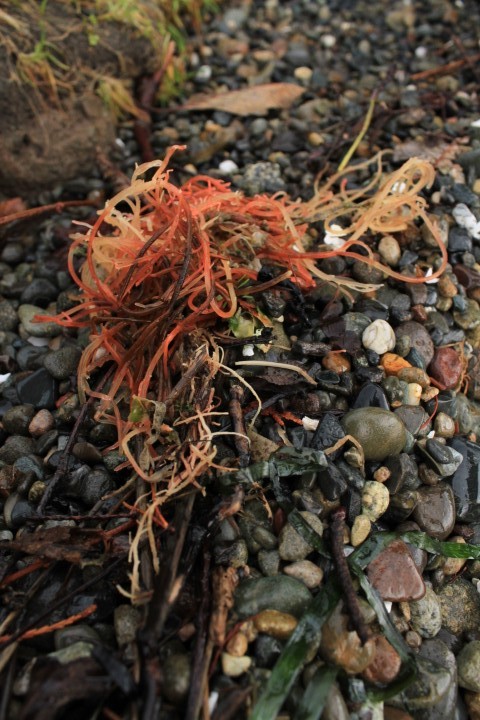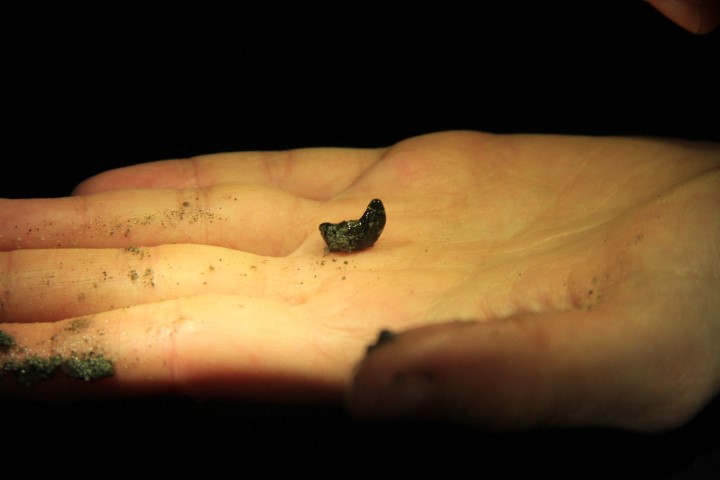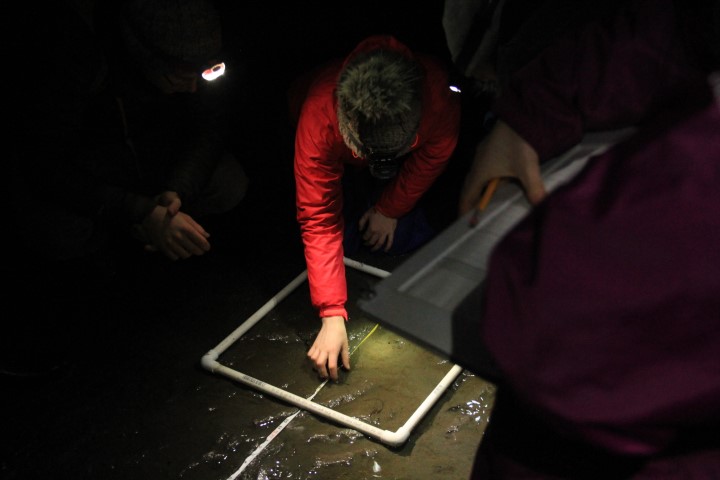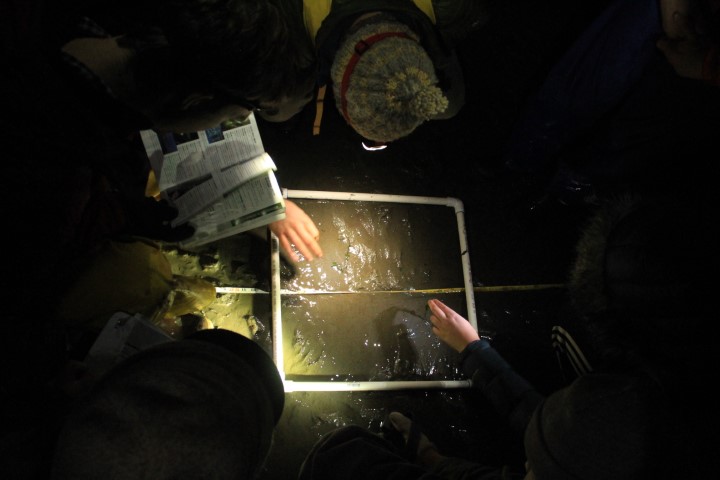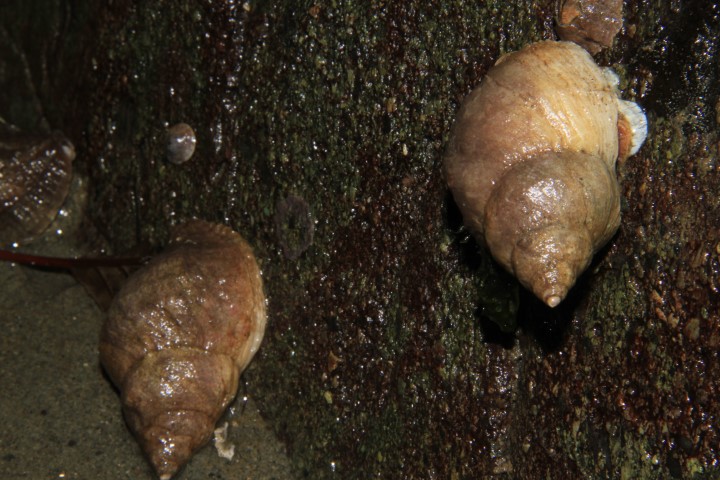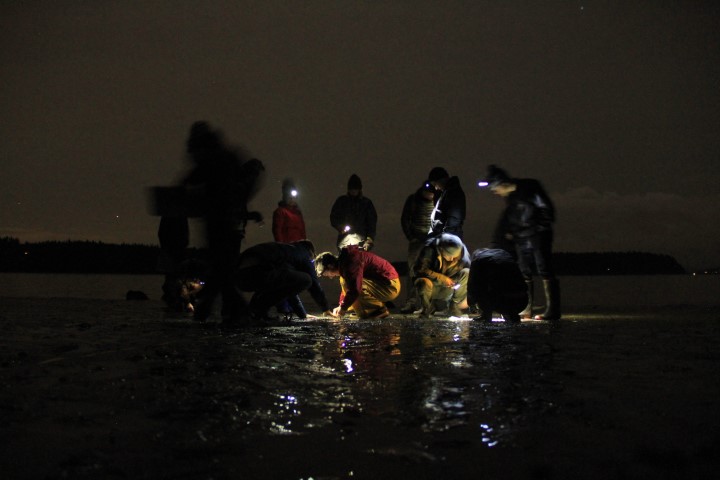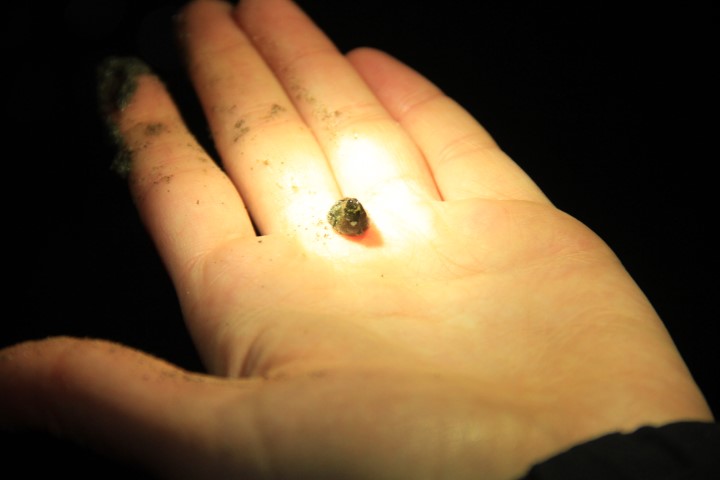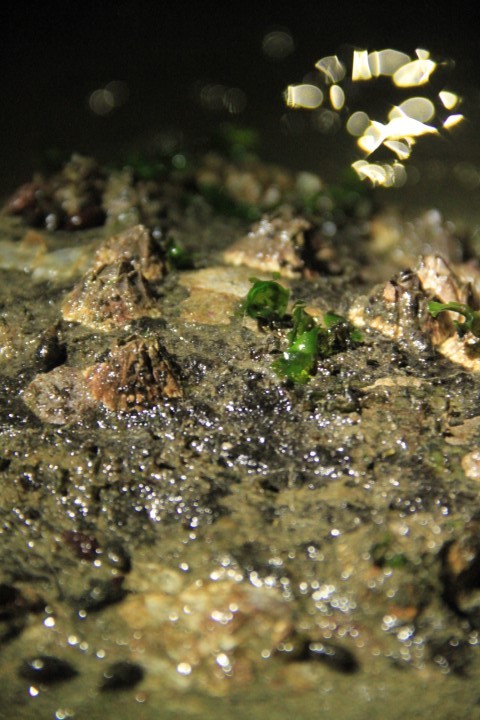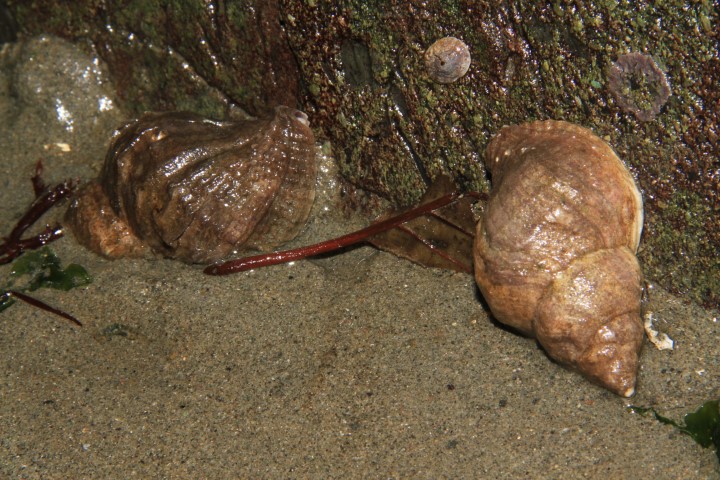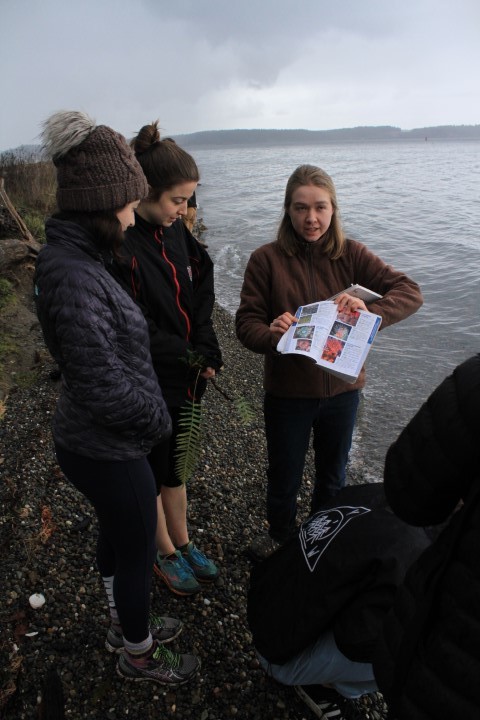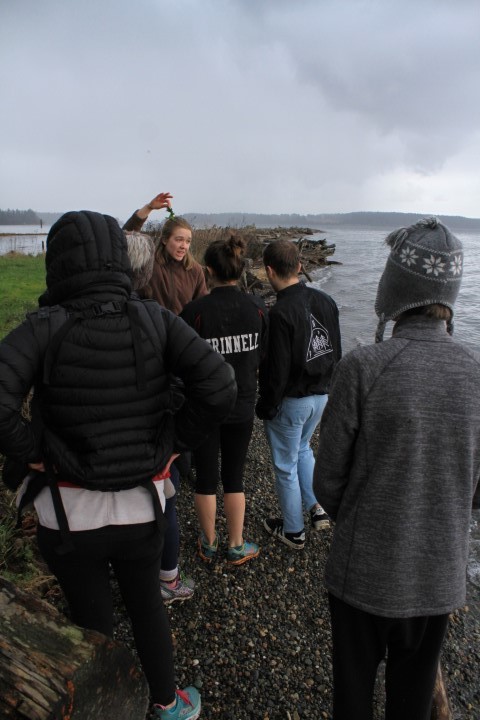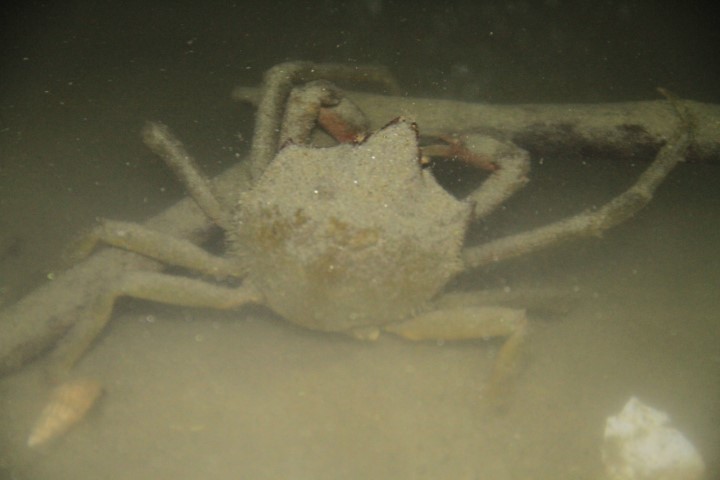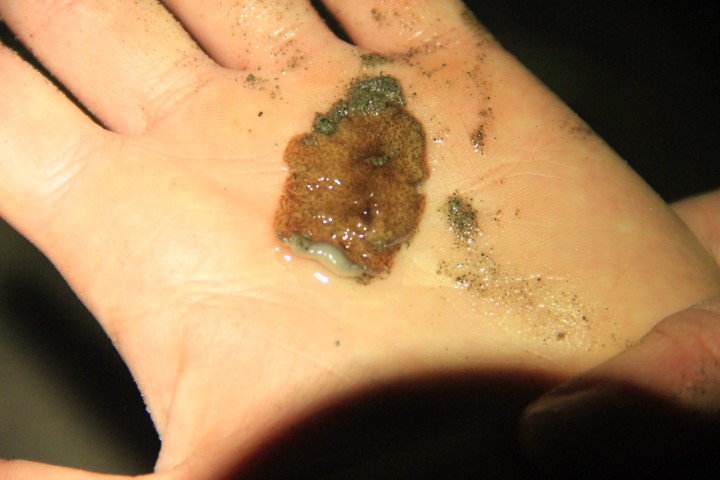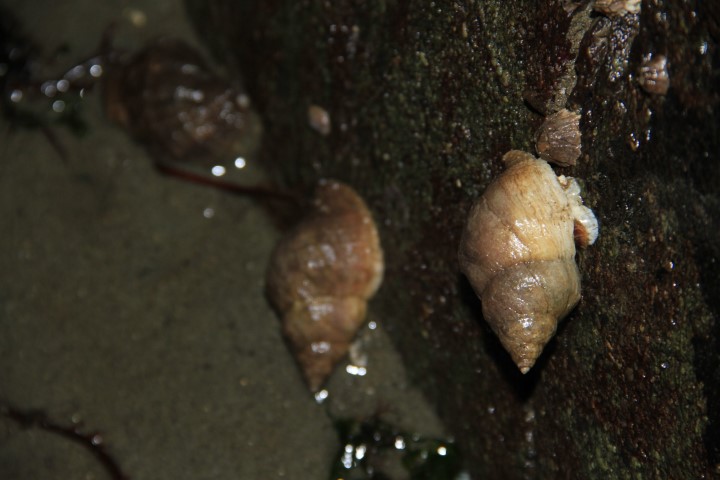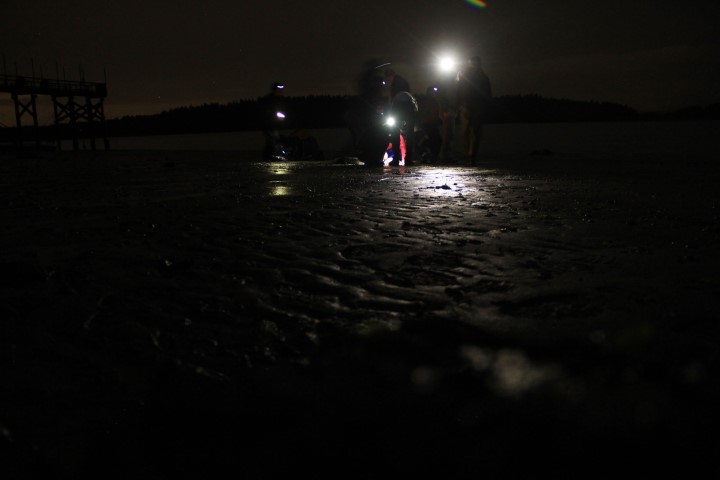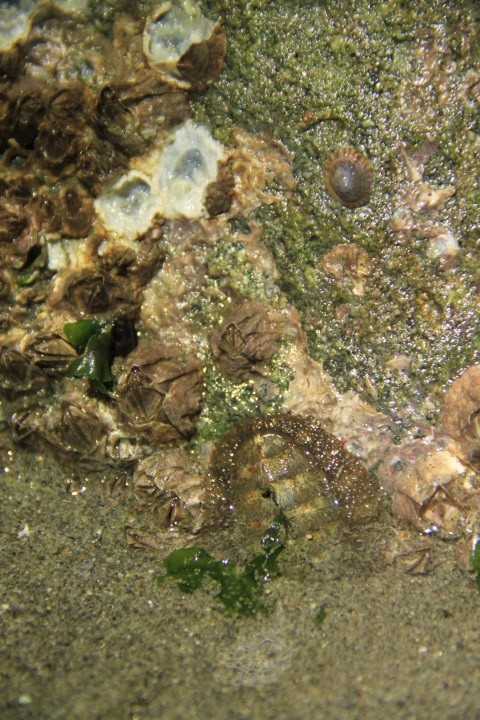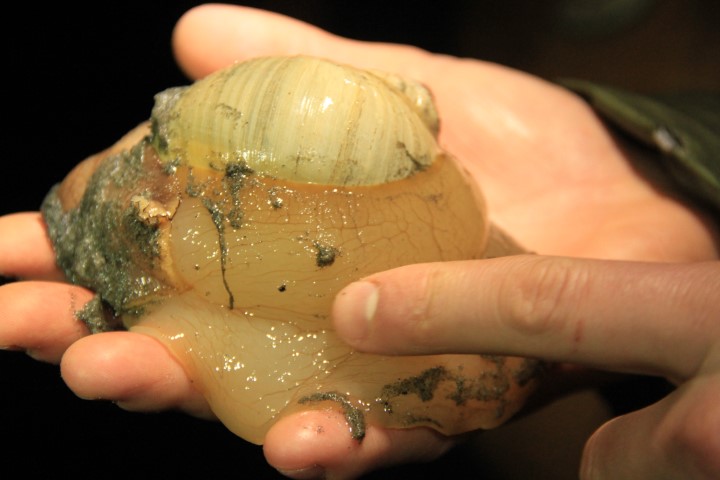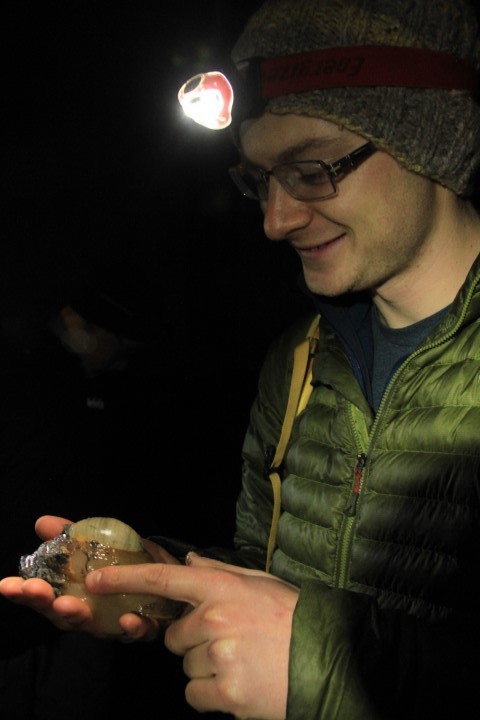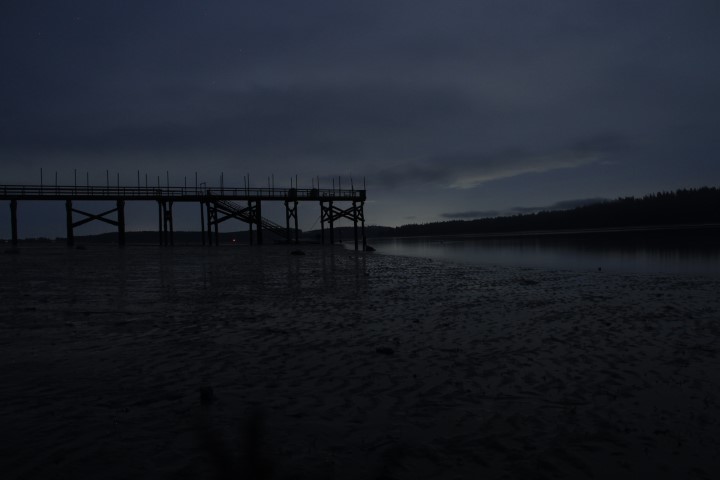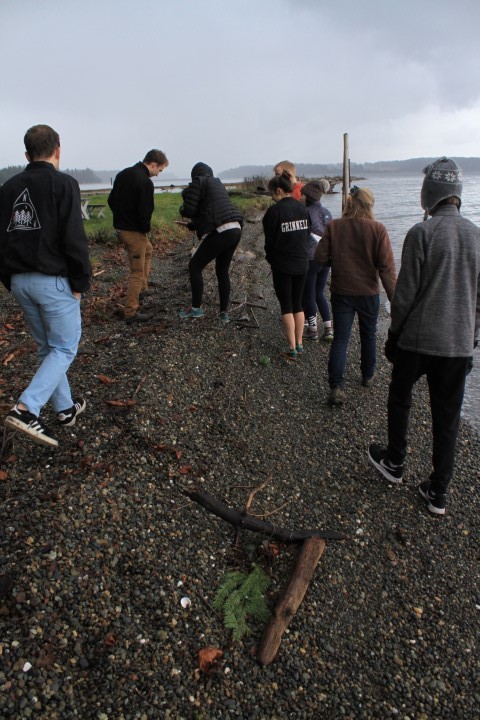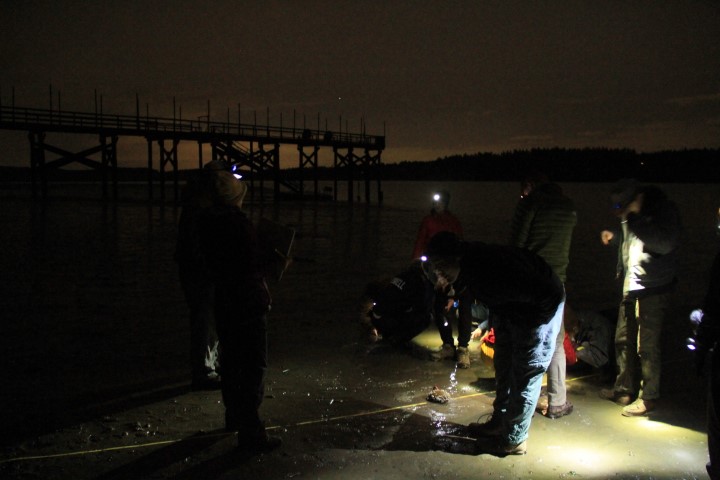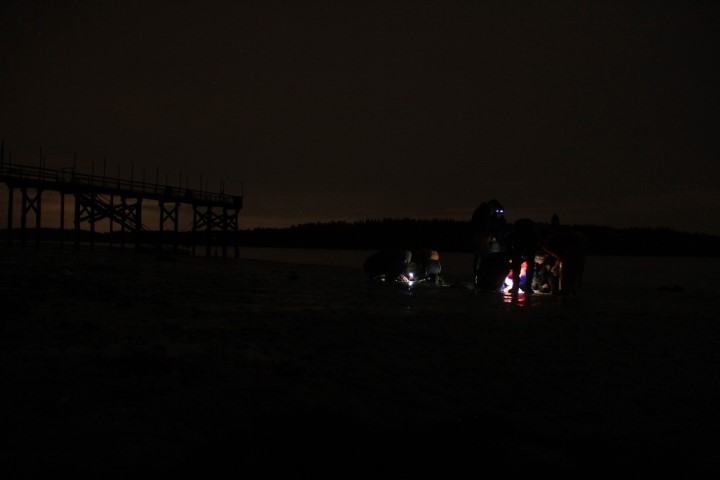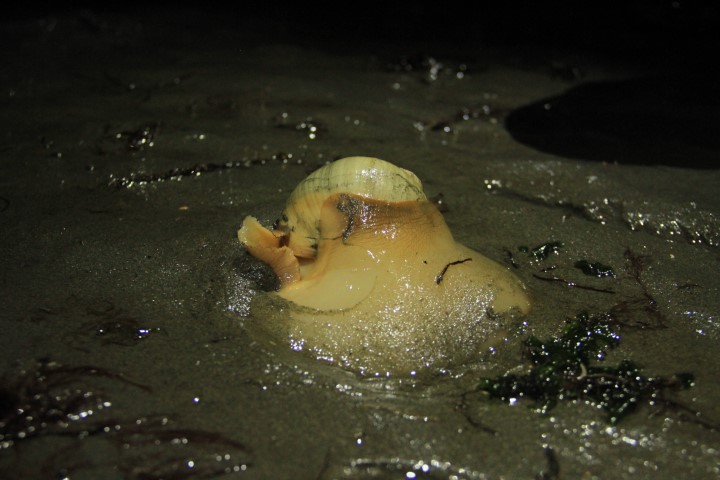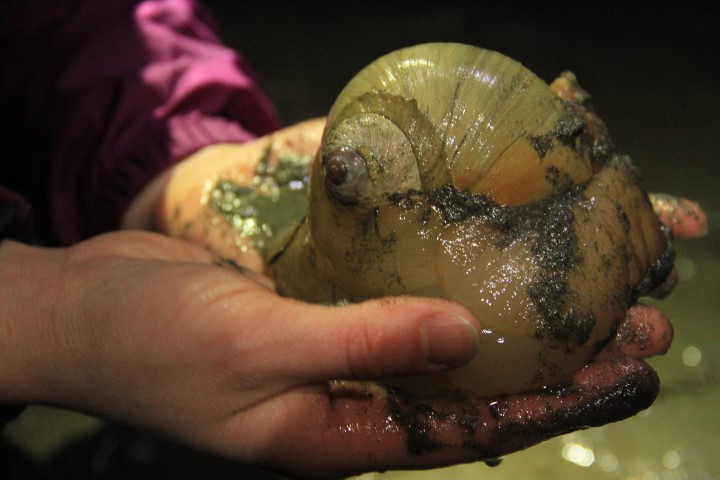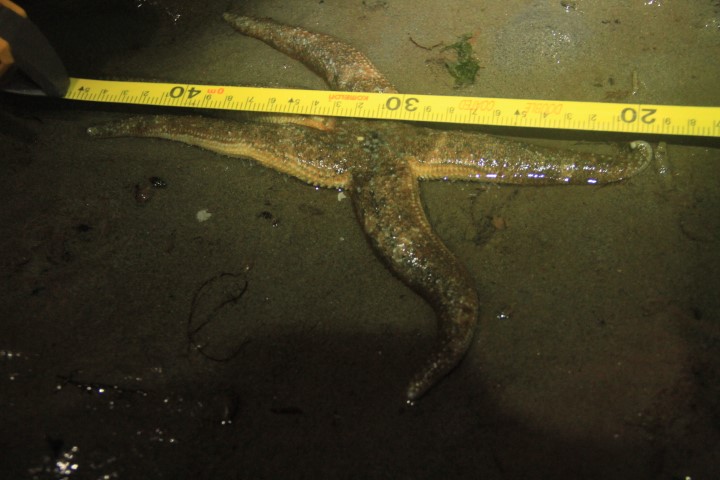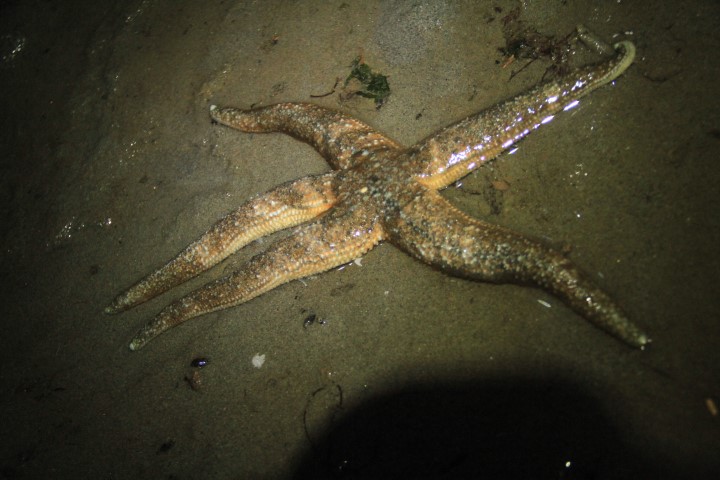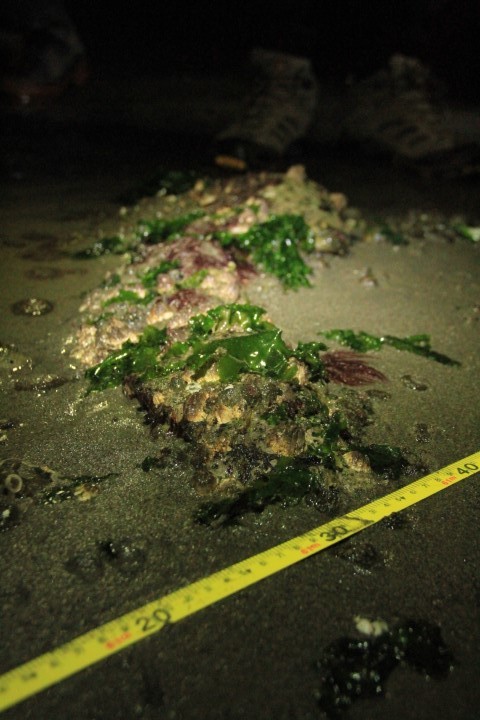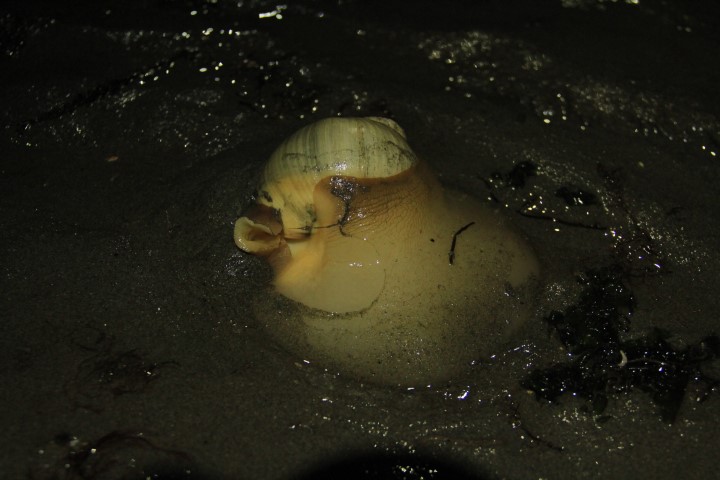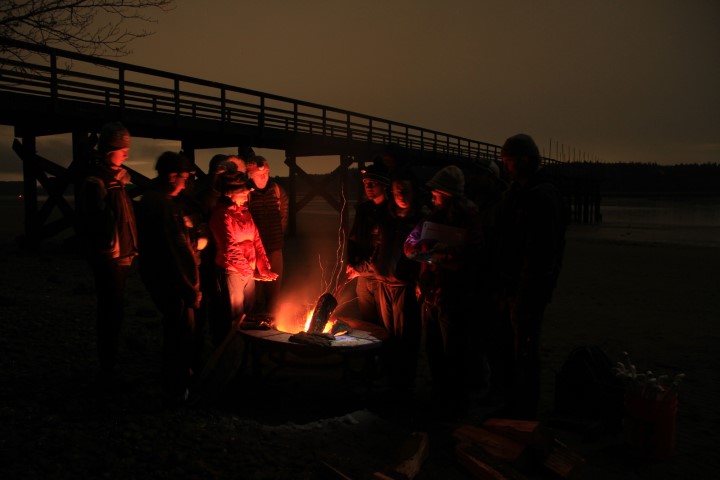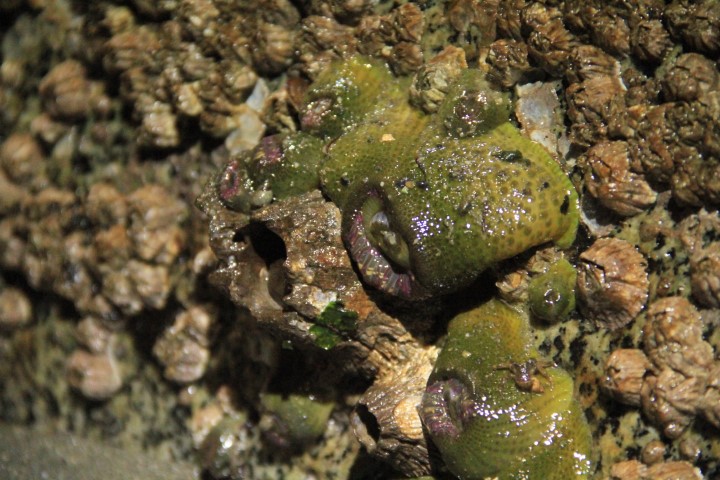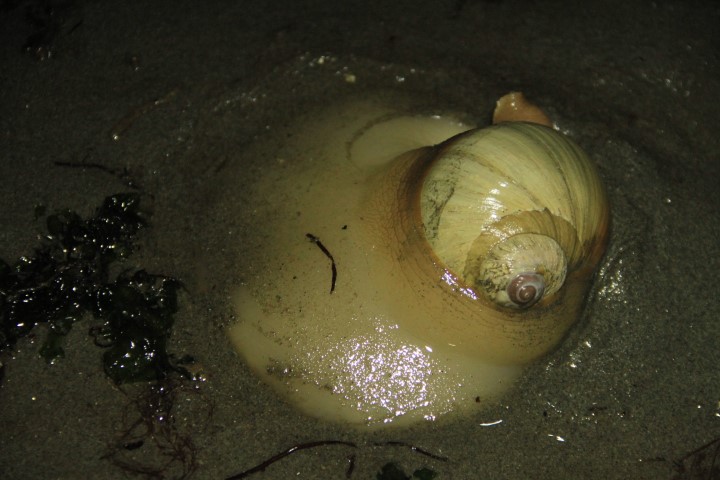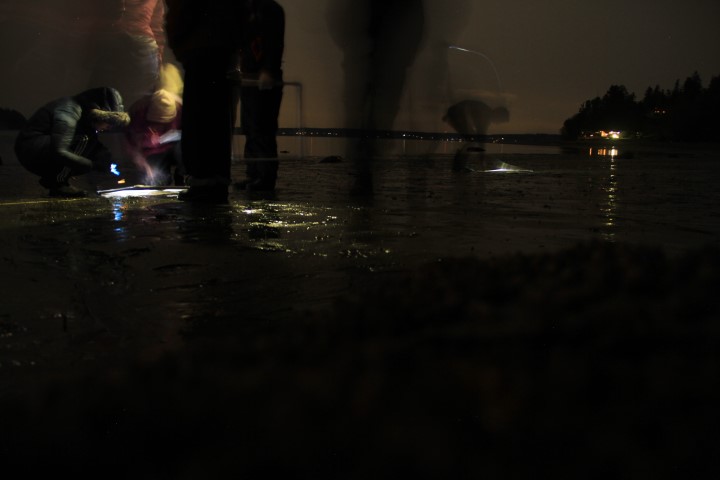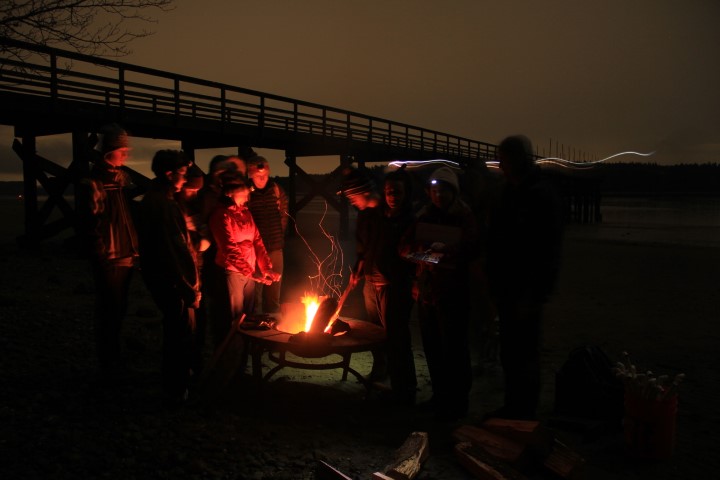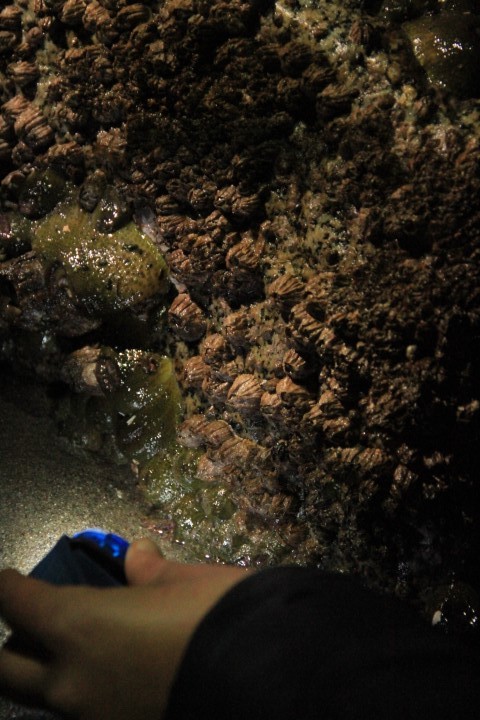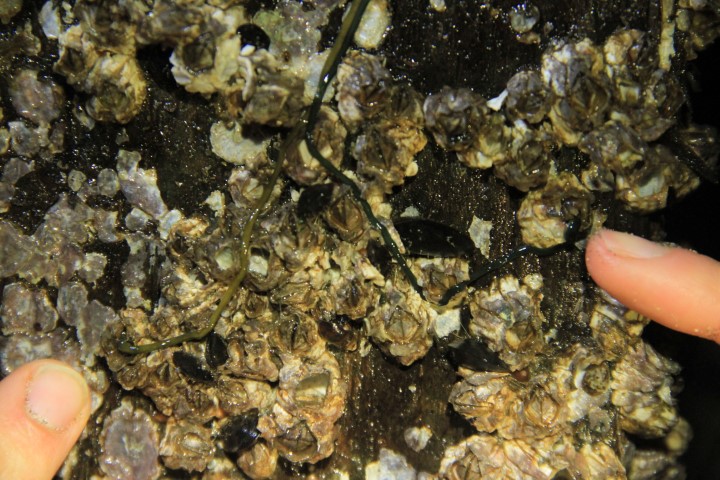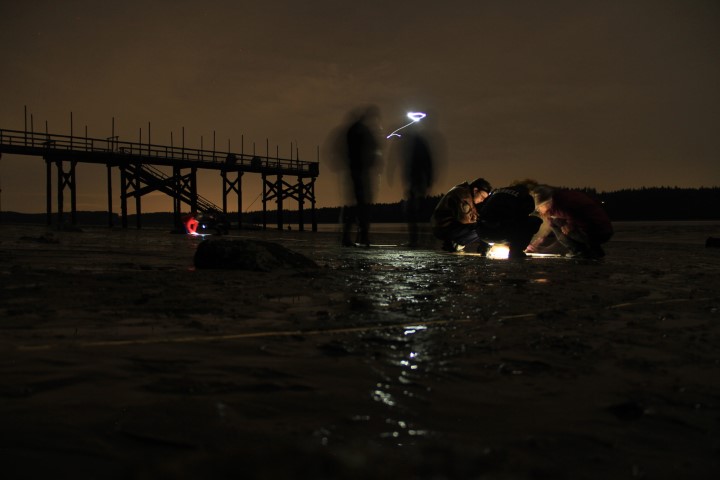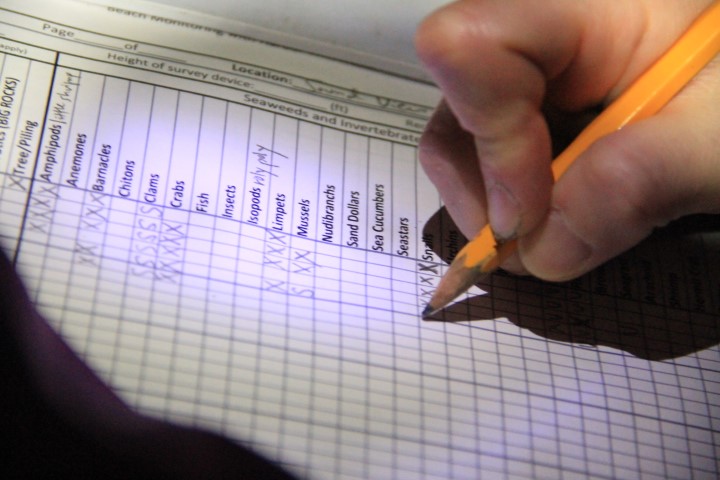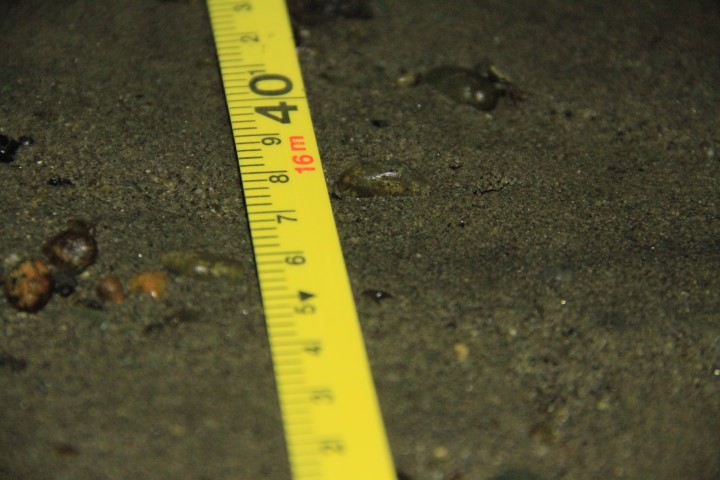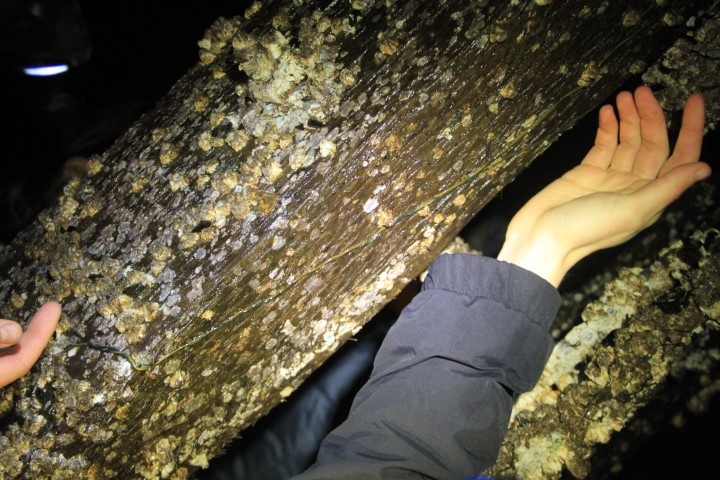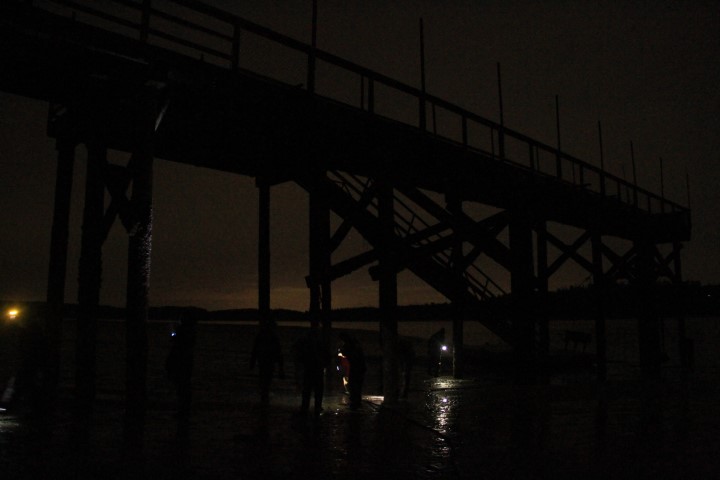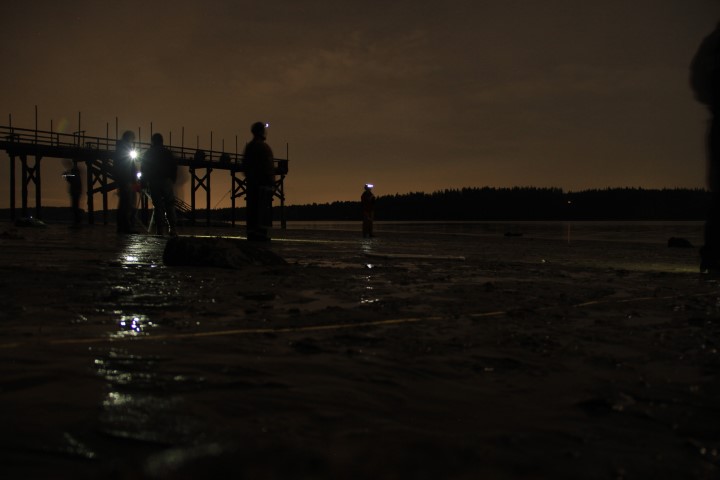Citizen Science: Winter Beach Monitoring
/A group of happy volunteers warming themselves around the fire. Thank you to Paul Cranefield for taking all of the photos!
This past Saturday night, January 19th, was a special day for our budding Environmental Education program here at Sound View. It was our first night of beach monitoring. It was also my birthday (Nancyrose here) and what could be better than the combination of the two?! Thirteen friends came out to help with the beach monitoring, and they were quick learners and happy to spend the night out under the light of an almost-full moon.
This beach monitoring experience is part of an effort to conduct more citizen science at camp. Citizen science is the participation of members of the general public, rather than professional scientists, in scientific inquiry. The goal of citizen science is for people to have fun, learn a lot, and find out more about the world around us. But it’s not just for fun — regular folks can actually make a big impact by doing citizen science, as they help collect meaningful data that may be small on its own, but combined with other scientific data can make a difference. For example, the data from our beach monitoring experience will go to the marine education organization Harbor WildWatch. They will then submit it to a database that collects long-term data on beaches throughout Puget Sound. In the long run, the data we collect from our Sound View beach could give helpful information about the health of Puget Sound — whether populations of certain species are increasing or decreasing over time, whether invasive species have entered into our waterways, and how the numbers of creatures change from month to month, affecting the availability of food for other animals. We will also benefit by learning more about what makes Sound View’s beach special!
A KelP Crab explores underneath the pier. check out those long legs! Pick them up with caution: Their legs are quite sharp on the ends, and can pierce the skin.
Our 100 acres of forest and long beach provide a variety of ecosystems to do some great science. Our bird count on January 5th was an example of citizen science: a snapshot of the birds in an area at a given time. The data from the bird count was submitted to eBird, which is an online database where avid birdwatchers can enter their avian observations so that they can be used for conservation purposes! Bird counts at Sound View will be especially interesting because so many birds migrate through this region.
But enough about birds! Back to marine biology! Here is a collection of the best photos from the night. Together they tell the story of our big night. We can’t wait until our next beach monitoring experience in the summer!
CLICK ON THE ABOVE PICTURE AND YOU’LL BE ABLE TO SEE ALL OF THE PHOTOS FROM BEACH MONITORING!
We first did a presence/absence survey, in which we indicated whether there were any of a certain grouping of creatures in a 3x5 meter area. We did this all the way from the tree line down to the -1 tide line, 81 meters in all!
The second part of our survey was Counting all of the individuals within 2o different quadrats by species. We occasionally used a field guide to consult if we didn’t know a species.
A whelk, a chiton, and a lot of barnacles. We found an abundance of creatures on rocks, not so many in the sand. disruptions, such as pilings, rocks, and fallen logs, are generally places of more ecological diversity.
The third and final part of our survey was the sea star count. We walked along the beach for a total of 1o minutes searching for sea stars. For every one we had to measure its radius and check for signs of sea star wasting disease, a disease that has been causing die-outs of sea stars all along the north pacific coast. Unfortunately, this mottled sea star (Evasterias troschelli), the only one we found, seems to have some of the early signs of the disease - white lesions along its top.
We finished so quickly that we even had plenty of free time to explore underneath the pier, which is not within our survey area. This is where we found some of the most interesting creatures!





